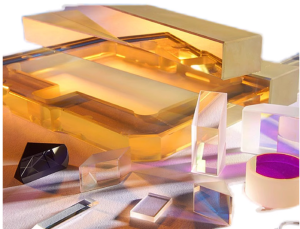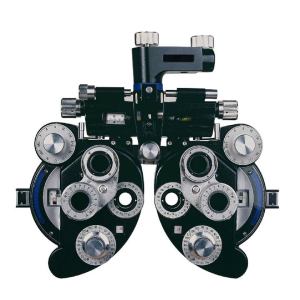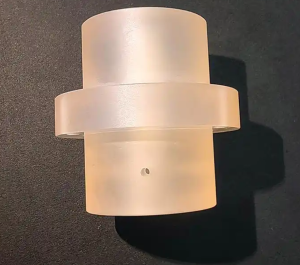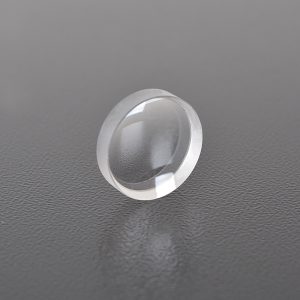
Analysis of Optical Components of Comprehensive Ophthalmometer
Comprehensive ophthalmometer is an indispensable device in modern optometry examination. Its core function relies on the combination and coordinated work of multiple optical lenses. These lenses help optometrists accurately measure the patient’s refractive state, binocular vision function and eye position through precise optical design and parameter adjustment.

1. Working principle
The working principle of comprehensive ophthalmometer is based on optical imaging and refractive correction. By adjusting the position and parameters of optical lenses, the light path entering the eye is changed to simulate different refractive states. Optometrists gradually adjust the lens combination according to the patient’s visual feedback and finally determine the best refractive correction plan.
2. Optical path structure
The optical path structure of comprehensive ophthalmometer mainly includes the following parts:
1. Light source system: provides stable illumination, usually using white light or monochromatic light of a specific wavelength.
2. Lens group: including spherical mirrors, cylindrical mirrors, prisms, etc., used to adjust the focus and deflection of light.
3. Sight mark system: displays different patterns or texts for patients to observe.
4. Reflection and refraction elements: such as beam splitters, reflectors, etc., used to guide and adjust the light path.
5. Receiving system: including the patient’s eyes and the optometrist’s observation system.
3. Optometry process
The optometry process of the comprehensive optometrist usually includes the following steps:
1. Initial examination: use a spherical lens to initially correct vision.
2. Astigmatism detection: determine the degree of astigmatism and axis position through a cylindrical lens and a cross cylindrical lens.
3. Binocular balance: use a prism lens and a polarized lens to check binocular coordination.
4. Near vision test: use near vision lenses to assess presbyopia.
5. Special examinations: such as color vision test, stereoscopic vision test, etc.
4. The role of optical elements and lenses
The optical lens in the comprehensive optometrist is its core component, and each lens has specific functions and application scenarios:
Spherical lenses are usually designed for the visible light band (400-700 nm) to ensure a clear visual experience during the optometry process. The spherical lens is used to correct myopia and hyperopia, which involves two types of lenses, plano-convex lens and plano-concave lens. In the comprehensive optometrist, the spherical lens can be quickly switched through a rotating or sliding mechanism, and the optometrist can adjust the lens combination according to the patient’s feedback.
The plano-convex lens has a flat surface on one side and a convex surface on the other side. It is mainly used to correct hyperopia (positive lens). The convex surface converges the light and increases the focusing ability of the light. It is used to increase the refractive power.
The plano-concave lens has a flat surface on one side and a concave surface on the other side. It is mainly used to correct myopia (negative lens). The concave surface diverges the light and reduces the focusing ability of the light. It is used to reduce the refractive power.
In the comprehensive optometrist, the design of the spherical lens needs to meet the following requirements:
High optical precision: The radius of curvature and thickness of the lens must be precisely controlled. The radius of curvature determines the convex or concave shape of the lens to ensure the accuracy of the refractive power; the center thickness affects the optical performance and weight of the lens.
Low aberration: The lens needs to minimize optical aberrations such as spherical aberration and chromatic aberration to ensure imaging quality.
Lightweight and durable: Lens materials are usually made of optical glass or resin, which is both light and durable.
Diopter (D): Indicates the refractive power of the lens, ranging from -20D to +20D.
Material refractive index (Refractive Index): Usually 1.5 to 1.7, affecting the refractive power and dispersion characteristics of the spherical lens.
2. Cylindrical lens
Cylindrical lens (application band visible light 400-700 nm) is used in comprehensive optometry to detect and correct astigmatism. By rotating the cylindrical lens, the axis and degree of astigmatism are determined to complete the detection. By adjusting the diopter and axis of the cylindrical lens, the light is focused on the retina in the horizontal and vertical directions for astigmatism correction. Its characteristics are that there is curvature in one direction (there is curvature on the cylindrical axis, which is used to focus or diverge light), and there is no curvature in the other direction (it is a plane in the direction perpendicular to the cylindrical axis, which does not change the propagation direction of the light). According to its applicable type, we divide it into positive cylindrical lens and negative cylindrical lens.
The positive cylindrical mirror is shaped like a convex cylindrical mirror, which focuses light on the cylindrical axis and is used to correct astigmatism in one direction.
The negative cylindrical mirror is shaped like a concave cylindrical mirror, which diverges light on the cylindrical axis and is used to correct astigmatism in another direction.
The optical properties of the cylindrical mirror are mainly reflected in its asymmetry. One-way focusing or divergence only changes the propagation direction of light on the cylindrical axis. Astigmatism correction is used to correct astigmatism so that light is focused on the same plane in the horizontal and vertical directions.
Cylindrical lens parameters
Cylindrical Power (D): indicates the refractive power of the cylindrical lens, ranging from -6 D to +6 D.
Axis (°): indicates the direction of the cylindrical axis of the cylindrical lens, ranging from 0° to 180°.
Radius of Curvature: determines the curvature of the cylindrical lens.
Refractive Index of the material: usually 1.5 to 1.7, affecting the refractive power of the cylindrical lens.
The cross cylinder is a key optical element used in the comprehensive optometry machine to accurately adjust the degree of astigmatism and axis. It consists of two positive and negative cylindrical lenses, whose cylindrical axes are perpendicular to each other (usually 90°), and the refractive power is equal but the sign is opposite (positive and negative refractive power); the cross cylinder is quickly flipped by rotating the handle to achieve the direction of positive and negative refractive power. The center mark indicates the axis direction of the cross cylinder (0° to 180°). A cross cylinder may generally consist of two cylinders (for diopter adjustment) of +0.25 D and -0.25 D.
3. Prism
In a comprehensive ophthalmometer, the prism is usually a prism with a triangular cross-section, usually an isosceles triangle or a right triangle, and its main function is to deflect light. It is used to detect and correct eye position deviation (such as detecting strabismus or latent strabismus) and evaluate the position and coordination of the eyes; light will be deflected when passing through the prism, and the deflection angle depends on the vertex angle and refractive index of the prism. The prism degree (Prism Diopter, △) is used to quantify the deflection ability, and 1△ means that the light is deflected by 1 cm at 1 meter.
Secondly, there is the Risley rotating prism, which consists of two prisms that can rotate relative to each other. By rotating the two prisms, the deflection direction and angle can be adjusted, and the prism degree can be adjusted continuously. During the entire use of the prism, the light path is adjusted through the prism to help patients achieve binocular single vision strabismus correction; the prism serves to separate the binocular sight mark, evaluate the binocular vision function and complete the binocular balance test.
Main parameters of prism
Prism Diopter (△): Indicates the deflection ability of light, ranging from 0△ to 20△.
Apex Angle: Determines the deflection ability of the prism, usually 5° to 15°.
Refractive Index: Usually 1.5 to 1.7, to ensure the accuracy of the deflection angle and avoid affecting the deflection ability of the prism.
Base Direction: Indicates the deflection direction of the prism, usually the base is upward, downward, inward or outward.
Material and dispersion: Prism materials usually use low-dispersion optical glass or resin materials to avoid introducing chromatic aberration.
Red and green bandpass filters are usually used in comprehensive optometrists to assist optometrists in fine-tuning the spherical power and checking binocular balance. Optical filtering is achieved through the BP620 narrow-band red filter and the BP530 narrow-band green filter. In the comprehensive optometrists, the accuracy of the spherical power can be judged by comparing the red and green sight marks. The binocular sight marks can also be separated by red and green filters to evaluate binocular coordination. Due to the large difference in the wavelengths of red light (620nm) and green light (530nm), the human eye focuses on them slightly differently. By comparing the clarity of the red and green sight marks, the accuracy of the spherical power can be judged. If the red light sight mark is clearer, it means that the spherical power is insufficient; if the green light sight mark is clearer, it means that the spherical power is too high.
Parameter requirements
Center wavelength: about 620 nm/530 nm,
Bandwidth: about 10-20 nm
Transmittance: >90%
Cut-off depth: >OD2
Beamsplitters can divide incident light into two parts: reflected light and transmitted light. They are made of optical glass or thin film coatings. In optometrists, they are used to divide light into two paths, one to the patient’s eyes and the other to the optometrist’s observation system. In binocular balance examinations, beamsplitters can be used to separate binocular sight marks.
In comprehensive optometrists, plane reflectors and curved reflectors are often used. Plane reflectors are often used to reflect light from a light source to the sight mark system or the patient’s eyes. To ensure the efficiency of its optical path, its reflectivity usually needs to reach more than 95%. Curved reflectors can be used to adjust the focus state of light and optimize the efficiency of the optical path. They are also often used to replace lenses and reduce chromatic aberration.
6. Polarizers and neutral density filters
Polarized lenses are used to separate binocular sight marks and check binocular vision function. Neutral density filters are used to balance the brightness of both eyes.
The optical lens in the comprehensive optometrists is the core of its function. Through the combination and adjustment of spherical lenses, cylindrical lenses, prisms, polarizing lenses and other lenses, optometrists can comprehensively evaluate the patient’s refractive status and visual function. Each lens has its specific parameters and band application to ensure the accuracy and reliability of the optometry process. The position of optical lenses in the comprehensive optometrists is irreplaceable. Its design and application directly determine the accuracy of optometry results and the visual health of patients.
Hanzhong Brisun Optics Co., Ltd. Is the high precision optical element manufacturer provides customized production of Various optical lenses, including spherical lens, cylindrical lens, optical window, mirror, prism, filter, metal base mirror and other high-precision optical elements. The base materials include various optical glass, fused quartz, calcium fluoride (CaF2), zinc selenide (ZnSe), germanium (GE), silicon (SI), sapphire, metal and other materials. And provide antireflective film, high reflection film, spectroscopic film, metal film and other optical coatings.
Welcome to OEM and Purchasing!


